Diabetes prediction
Prediction of the risk of developing a complication at an early stage plays a key role in an adequate treatment and follow-up of the diabetic patient.
Decision support system based on Artificial Intelligence
AIMedical is an algorithm that can be applied to all diabetes complications
It is easily exportable to other national and international clinical files.


The doctor is indispensable for entering correct structural data and for correcting incorrect deductions on the AI.
Telemedicine from diabetics will be another source of information to add to that of the folder.

Expected benefits
The predictive algorithm can represent an important tool to help the clinician in identifying patients who need more attention and more frequent monitoring, thus helping to improve the therapeutic appropriateness and timeliness of interventions, with a view to reducing the therapeutic inertia.
This would produce both clinical and economic benefits, linked to the improvement of care.
AImedical workflow

Prediction of the risk of developing chronic complications of diabetes in subjects who do not yet have them

Development of an AI system for clinical decision support which allows the risk profile of morbidity to be traced

Prediction of resource consumption of patients based on their clinical characteristics recorded in the medical record

Integration of the AI system in the electronic file
The doctor is indispensable for entering correct structural data and for correcting incorrect deductions on the AI.
The predictive algorithm can represent an important tool to help the clinician in identifying patients who need more attention and more frequent monitoring, thus helping to improve the therapeutic appropriateness and timeliness of interventions, with a view to reducing the therapeutic inertia.
This would produce both clinical and economic benefits, linked to the improvement of care.
The predictive algorithm can represent an important tool to help the clinician in identifying patients who need more attention and more frequent monitoring, thus helping to improve the therapeutic appropriateness and timeliness of interventions, with a view to reducing the therapeutic inertia.
This would produce both clinical and economic benefits, linked to the improvement of care.